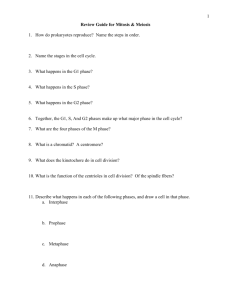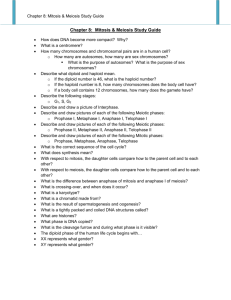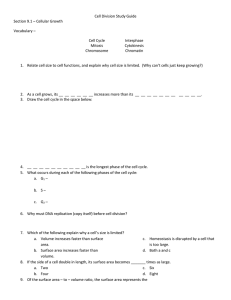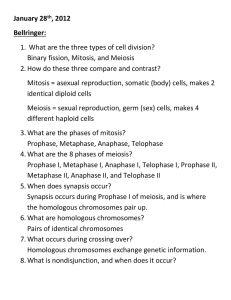DNA Homework
advertisement
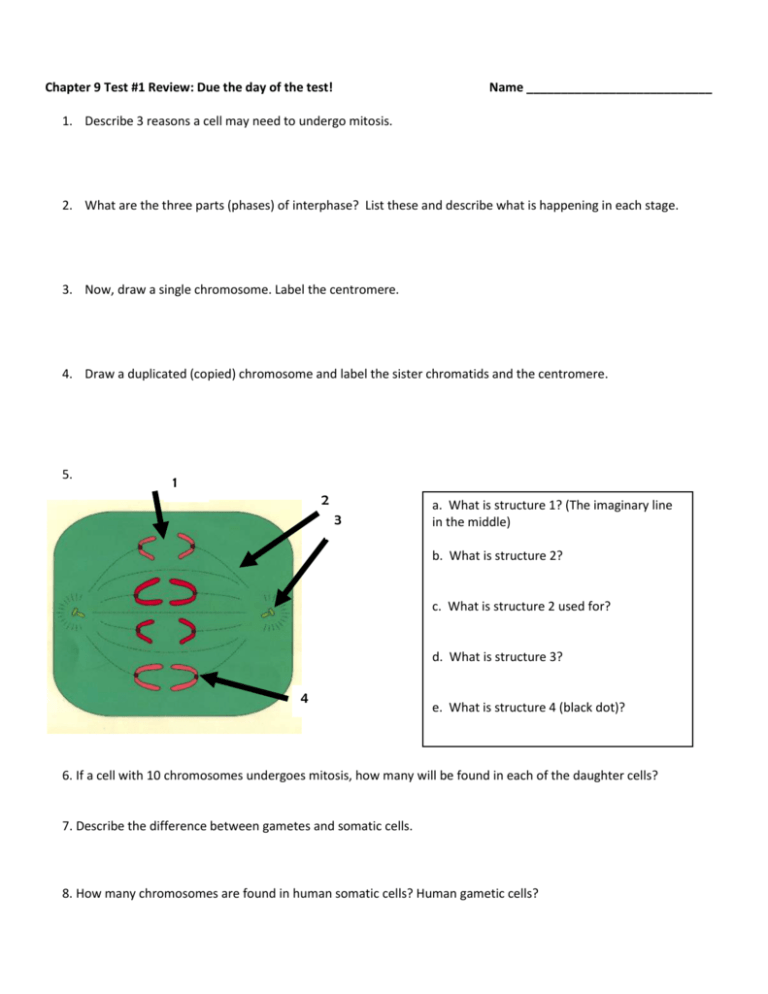
Chapter 9 Test #1 Review: Due the day of the test! Name ___________________________ 1. Describe 3 reasons a cell may need to undergo mitosis. 2. What are the three parts (phases) of interphase? List these and describe what is happening in each stage. 3. Now, draw a single chromosome. Label the centromere. 4. Draw a duplicated (copied) chromosome and label the sister chromatids and the centromere. 5. 1 2 3 a. What is structure 1? (The imaginary line in the middle) b. What is structure 2? c. What is structure 2 used for? d. What is structure 3? 4 e. What is structure 4 (black dot)? 6. If a cell with 10 chromosomes undergoes mitosis, how many will be found in each of the daughter cells? 7. Describe the difference between gametes and somatic cells. 8. How many chromosomes are found in human somatic cells? Human gametic cells? 9. What is the correct order of the following stages? __________ A ___________ B ____________ C A _____________ D B C D 10. Identify the name phases of the cells A, B, C, D. a. b. c. d. 11. Explain the difference between mitosis and cytokinesis. 12. How is cytokinesis different in plant cells compared to animal cells? 13. Explain what can result when the normal controls of the cell cycle are not working properly. ____________ E 14. Provide a brief description of the stages of the cell cycle and Mitosis e. Interphase f. G1 g. S h. G2 i. Mitosis j. Prophase k. Metaphase l. Anaphase m. Telophase n. Cytokinesis 15. How is asexual reproduction different from sexual? Chapter 9 Test #2 Review 16. Describe the difference between haploid and diploid cells. 17. Describe why meiosis is important. 18. How do meiosis and mitosis differ? 19. If a cell with 10 chromosomes undergoes meiosis, how many will be found in each of the daughter cells? 20. Provide a brief description of the stages of the Meiosis. a. Meiosis I b. Prophase I c. Metaphase I d. Anaphase I e. Telophase I f. Prophase II g. Metaphase II h. Anaphase II i. Telophase II j. Cytokinesis 21. Describe how a zygote relates to gametes. 22. Define homologous chromosomes: 23. Describe the difference between sex chromosomes and autosomes. 24. Describe a karyotype and what it is used for. 25. Be able to read and analyze a karyotype.


